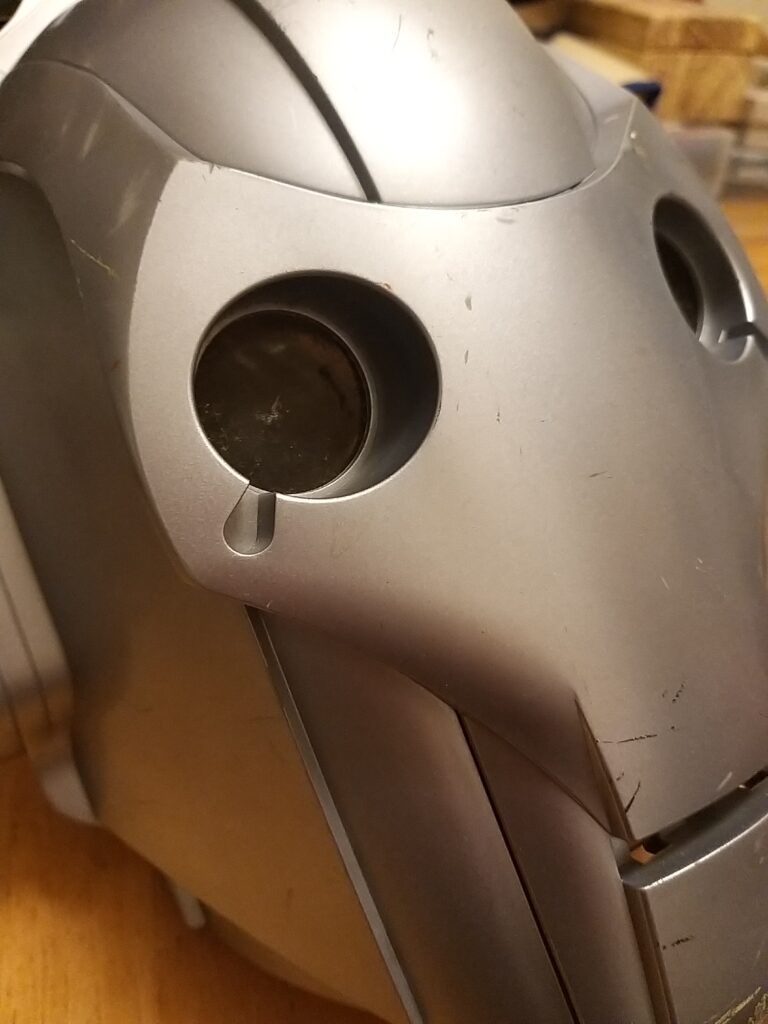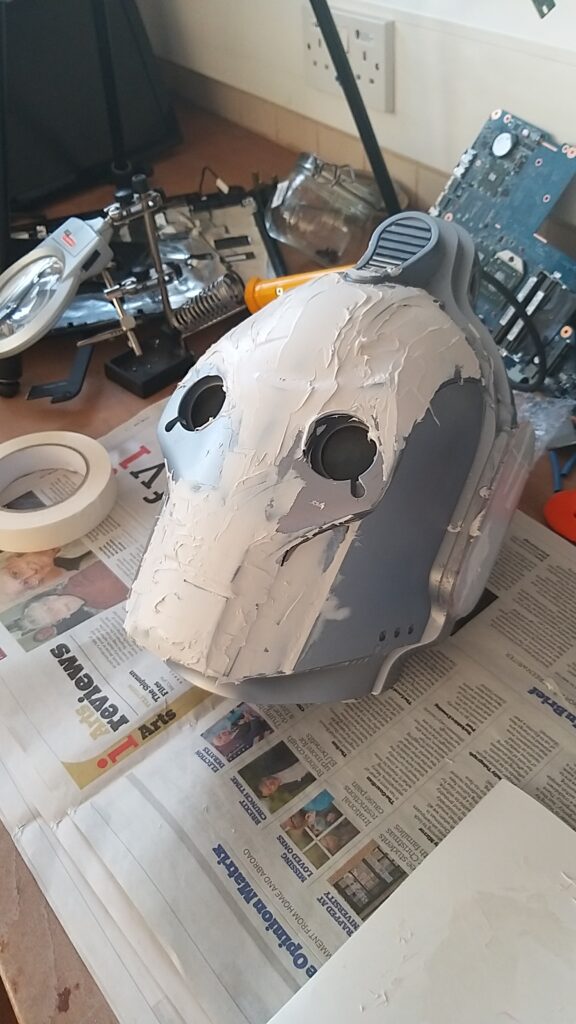Optical transmitter
In this time-based artwork, I have explored the degradation of the image linking it to theories based on the poor image and how the medium affects the message. The notion of the poor image has come to the forefront of society using todays digital mass media. The mass media social networks have accepted a lower quality image over the original for access speed. It is compressed repeatedly via vast digital connections. This digital fragment of the original is a poor copy but an accepted means of communicating the original message.
First test in image degradation
This first test was in an empty TV studio. Recorded with an HD camera in fully automatic mode and old flat-screen TV; I recorded myself talking to the camera and then played back on the TV while recording again and again in a loop; these loops of sound and tone began to overwhelm the text and abstract the sonic landscape are the room’s resonant frequencies and are entirely specific to the architectural particularity of a given space. As these frequencies grow, reinforced with each playback, the result was an erasure of the human performer and the dominance of environmental sound and video piece.
Fully automated experiments with webcam and computer, I have only uploaded timelapse versions with no sound to the image’s degeneration. The results are fascinating, and the way the images changes and grow and finally disappears with little trace of the original.
Sound
The sound was a problem for this work as it was made during the time of Covid. You could only experience it in the 2D world of your computer or phone, so I decided to record binaural sound. This allows the viewer to experience the sound moving around them and not be limited to the mono or stereo speakers.
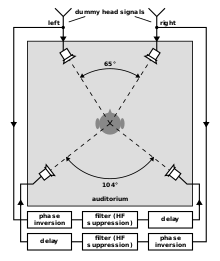
Binaural recording is a method of recording sound that uses two microphones, arranged to create a 3-D stereo sound sensation for the listener of actually being in the room with the performers or instruments. This effect is often created using a technique known as “dummy head recording”, wherein a mannequin head is outfitted with a microphone in each ear. Binaural recording is intended for replay using headphones and will not translate correctly over stereo speakers. This idea of a three dimensional or “internal” form of sound has also translated into beneficial advancement of technology in many things such as stethoscopes creating “in-head” acoustics and IMAX movies being able to create a three-dimensional acoustic experience
Ref- https://en.wikipedia.org/wiki/Binaural_recording
Next was looking at how I was going to achieve this Binaural sound needed to bring my recording alive, and with the cost of an off the shelf head being so much, I decided to build my version,
To build my DIY head, I purchased a mashed pair of condenser microphones.
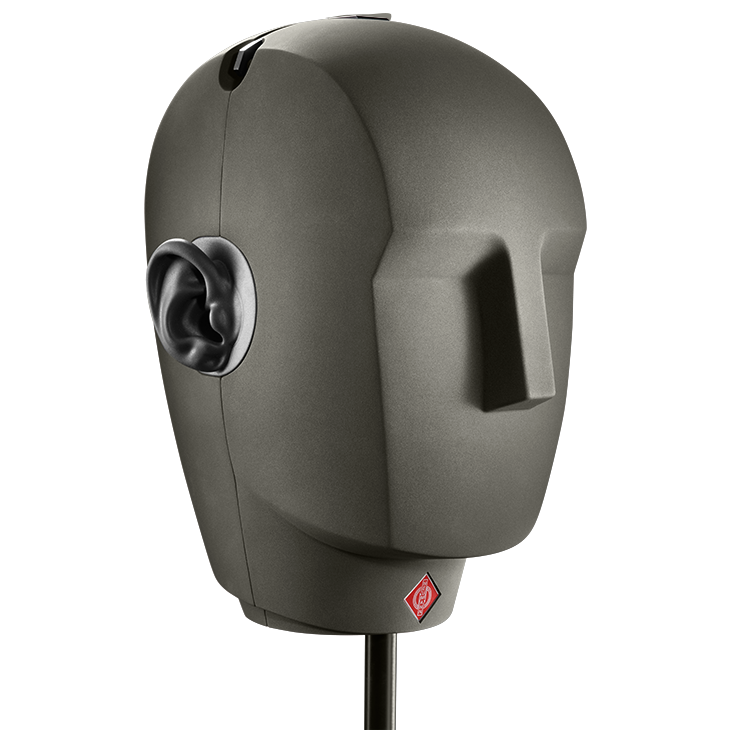
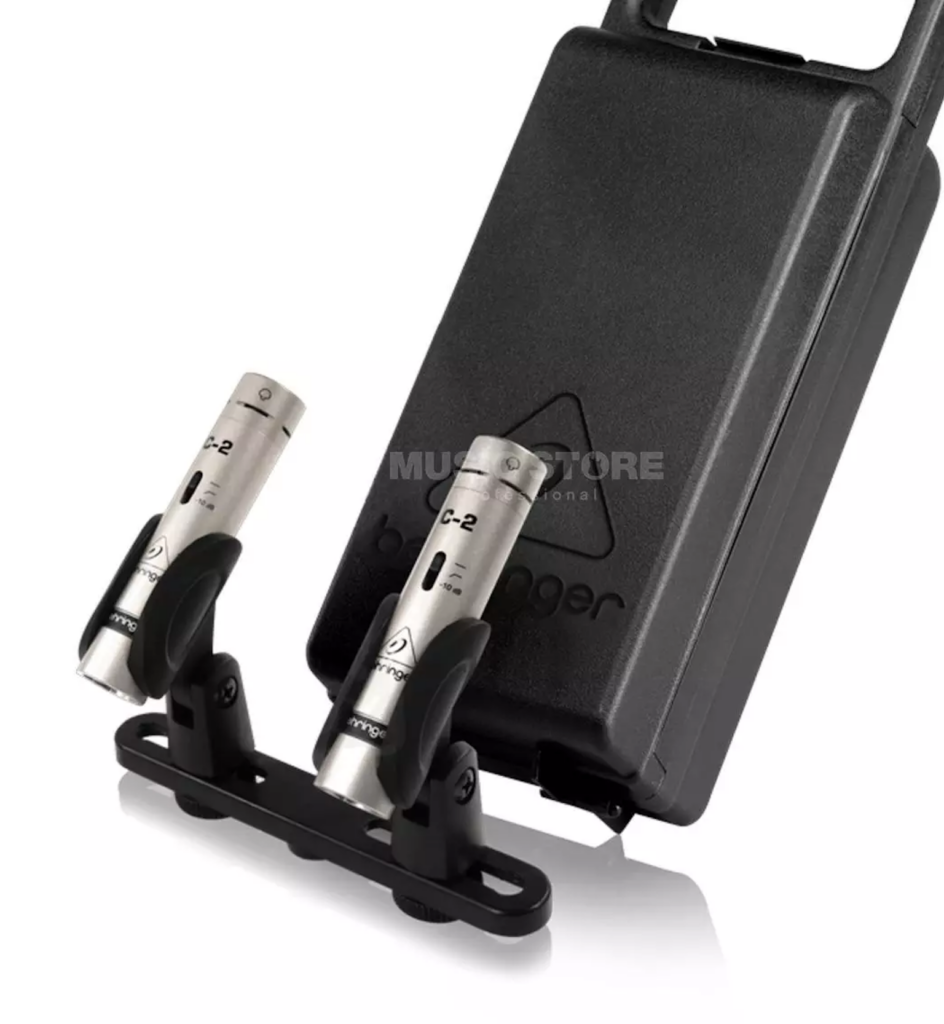
Building the Binaural head, I used an old Cyberman helmet as this was as close I could get to a human head so the shadow would be correct for the head itself; I reformed the head with filler and painted it with rubber paint to simulate human skin as close I could with my limited resource.
The ears are 3D printed to a cad file of a human ear with TPU a flexible filament allowing them to capture sound via a microphone inside the head and at the and of an artificial ear cannel.
co-researcher on the binaural head F.D.C. Willard
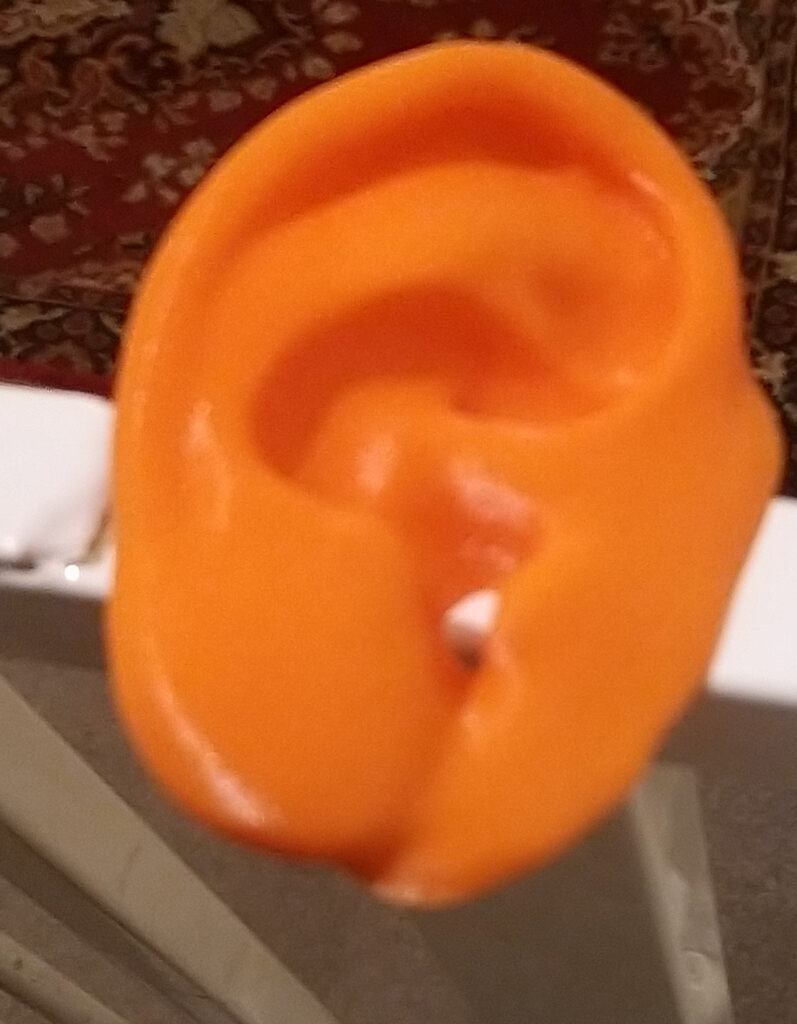
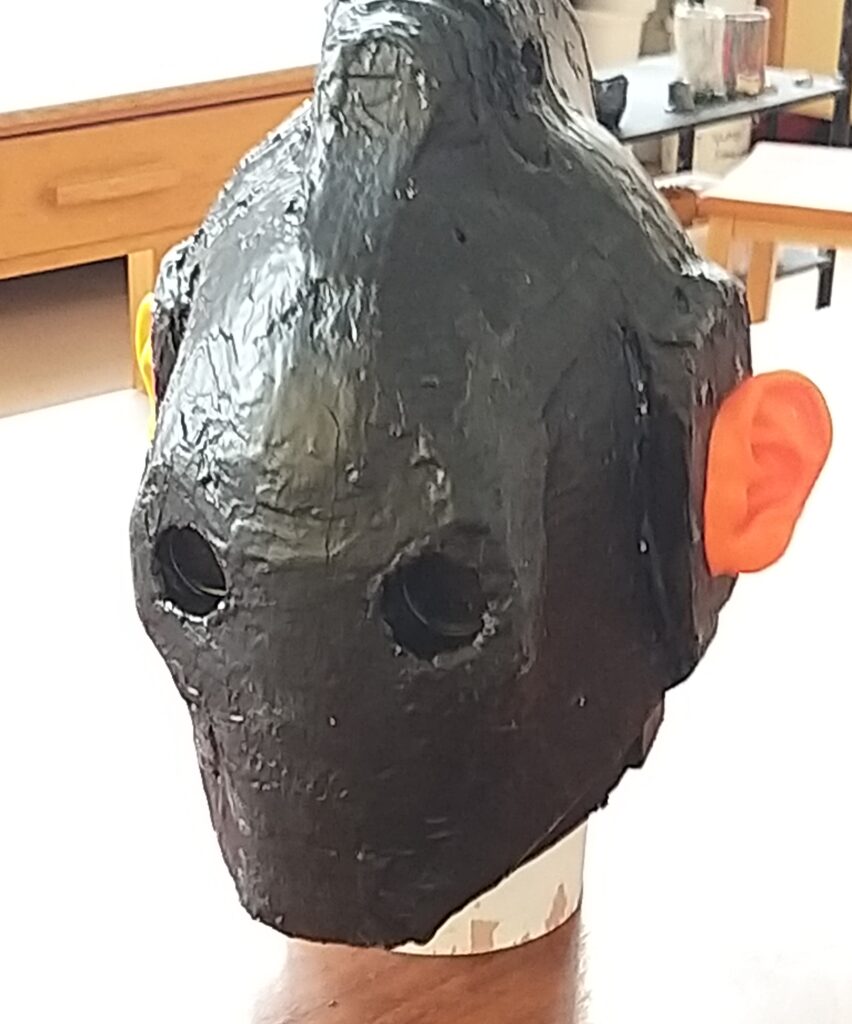
Once the head was complete, the first test where preferred in the TV studio, a good choice as it has lots of surfaces to reflect sound for the final work.
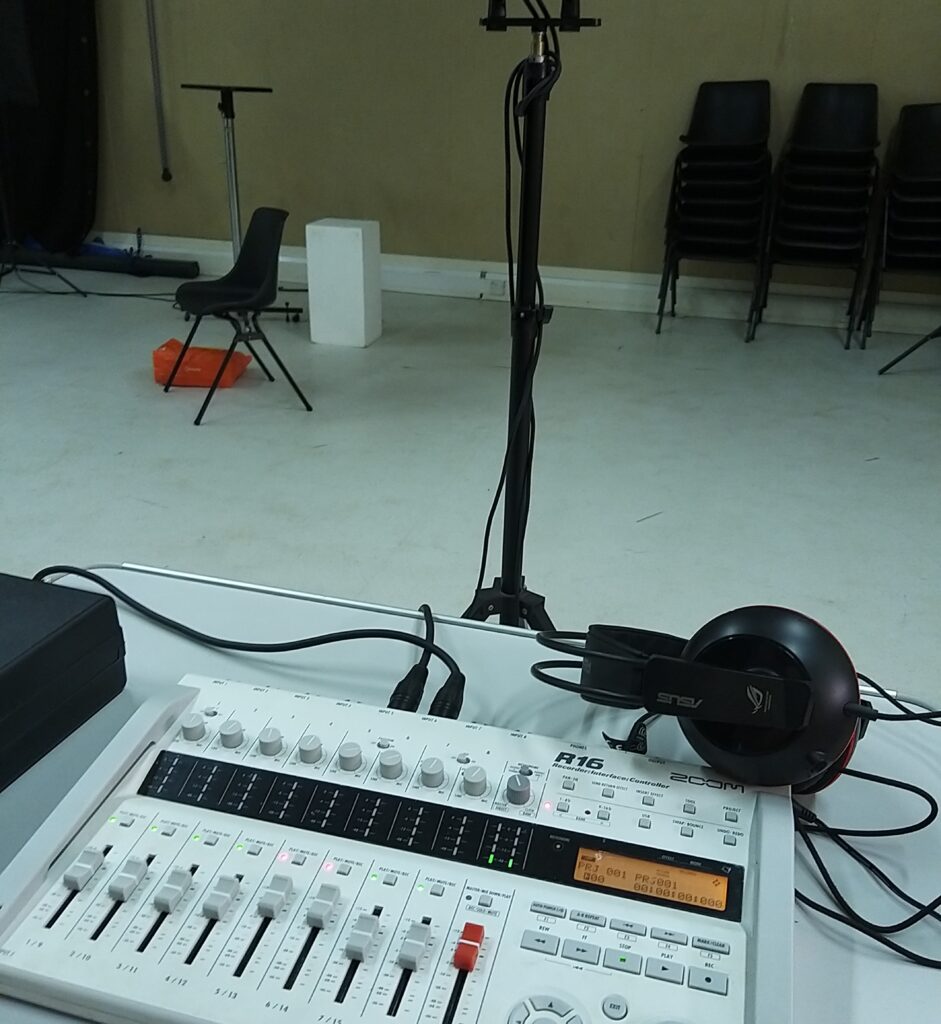
The original recording had to be done in a sound studio for the dreaded space I could see us at my disposal in this time of covid; the head was set up to record the actor’s voice and a Blackmagic pocket camera shooting the video in Raw format.
The setup for the loop recording in the tv studio, intimacy with a Blackmagic camera and binaural recording head, the extra cameras are to record the process of the film at this stage.
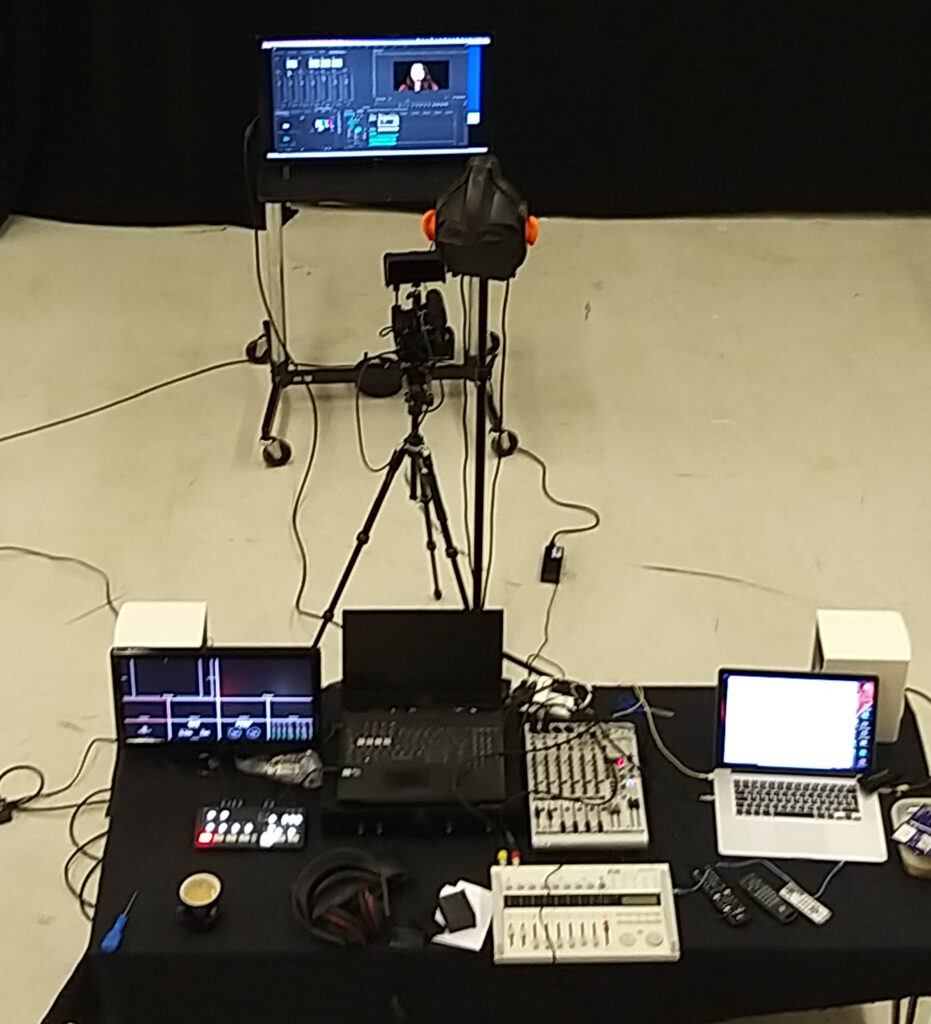
The first loop recording with the Blackmagic camera did not achieve the results from the early automatic tests that was expected; the end results are still good but just not what I would like to see. The image slowly disappears into the darkness, but as it is a fully manual camera did not distort the image as much as before..
This is the full loop filmed with A Panasonic HD camera in automatic mode to achieve the distortion I was after in the degrading piece of work. The thing that intrests me is that this work would be installed in many locations giving the viewer a s different experience and feeling each time.
The idea of my time-based work based on the poor image is from the quote from Hito Steyerl.
“The poor image is a copy in motion. Its quality is bad, its resolution substandard. As it accelerates, it deteriorates. It is a ghost of an image, a preview, a thumbnail, an errant idea, an itinerant image distributed for free, squeezed through slow digital connections, compressed, reproduced, ripped, remixed, as well as copied and pasted into other channels of distribution.”
This paragraph would be repeated and re-recorded sound and vision to produce an image and sound loop until the image and sound were no more recognisable. This is backed up with the intro of the work. Referring to the viewing device as the optical transmitter and looking at a womans image, but it is not a woman. It is a series of pixels made up of a variety of hues and shades. I am asking the question in this work, are we ever looking at the real thing or just a poor copy of the original? Even something as simple as the human sight gives the person a copy of the original. Not everyones eyes are the same, even with the aid of glasses to correct their vision. How can we truly look at an original image as our interpretation of the image will be different from every user’s experience.
This work has been recorded due to the current restrictions of covid and should be viewed on a computer screen/phone or another device with the aid of your headphones and try the immersive binaural sound. Even with this recording, you still do not get the 100% effect you would have had from the original showing in it’s locations. The part of the installation that can not be recorded or experience this way is the feeling you get in your body; the feeling of the base going through your body is one that can not be replicated.
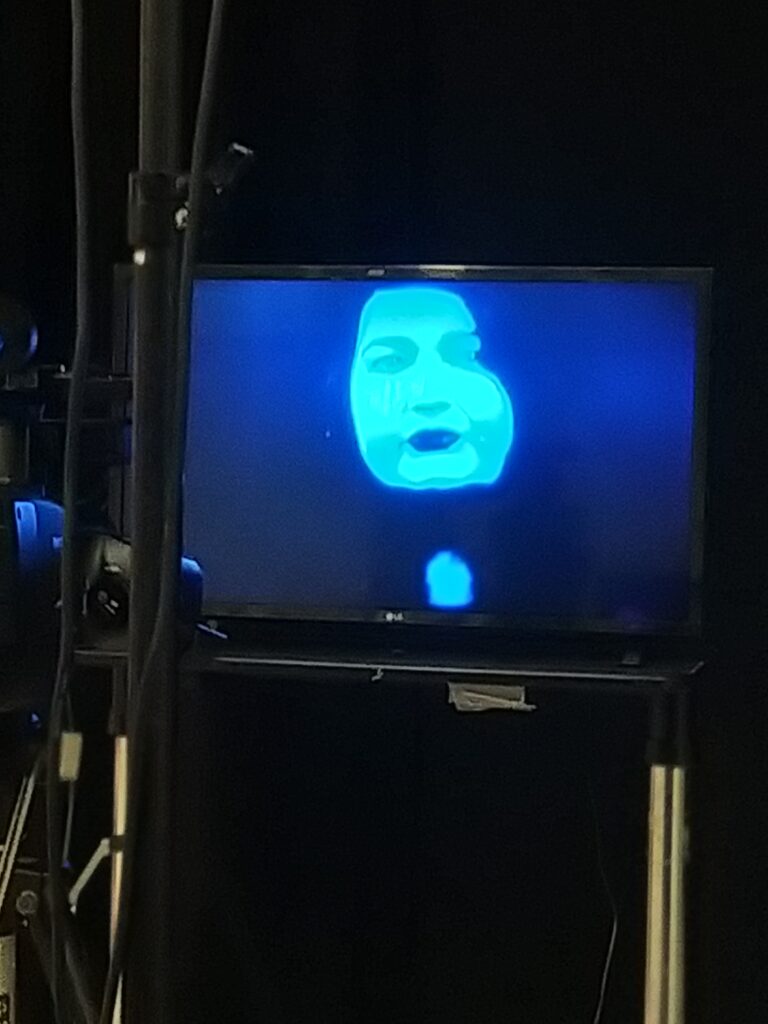
We find in this visual world we currently live in, the image becoming more critical every day, with the hierarchy of the image being of value; Hito Steyerl discusses this in her essay “in defence of the poor image” with the exclusivity of analogue film in this age of the digital media has become what many in the media of visual importance through the discourse of cinema. The poor image can be equated on the one hand to the economy of the production of the image as the user wants to create an image quickly and cheaply, they forgo quality for quantity, this insight and interpretation for the role technological reproduction plays in shaping the visual experience. The digital effect of film and photography with the decline of the autonomous aesthetic expertise of life with the repetition of art lacks the mechanical process and cannot reproduce its presence in time and space, where it was produced, and the loss of its aura.
Hito Steyerl- In Defence of the Poor Image
https://www.e-flux.com/journal/10/61362/in-defense-of-the-poor-image/
